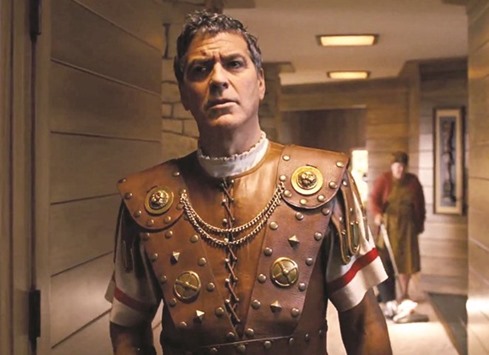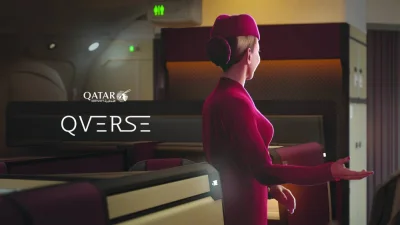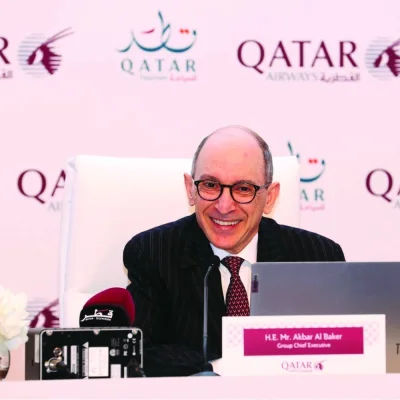It is not in India alone — as we often think — that movie stars are revered and celebrated, placed on a pedestal and worshipped like demi-gods. This happens the world over, and I have seen stern looking immigration officers at Venice or Cannes or Beijing melt and break into a big, big smile when I tell them that I am there in their country to cover a cinema festival. After this, it is green, green all the way!
But the sad truth is, these men and women, who weave fantasy on screen, pushing our pulses to pound and our imagination to take wings, are not demi-gods. They are mere mortals like any of us with their faults and weaknesses, their limitations and moods. Pushed to the precipice sometimes by silly journalists and their sillier questions, stars snap. As George Clooney did at the ongoing Berlin Film Festival — at a press conference soon after his movie, Hail Caesar!, was screened.
Clooney is a master actor, whose performances in films like Up in the Air, Syriana, Michael Clayton, The Descendants, The Monuments Men, Gravity and The American among others, were just about brilliant.
And like many responsible artists, Clooney has been deeply involved in humanitarian work. Part of Not On Our Watch Project, he has tried to draw global attention to stop and prevent mass atrocities. He has been vociferously campaigning for the world to recognise the 1915 Armenian genocide, and urging Turkey (which is the modern-day Ottoman Empire) to accept the responsibility for this tragedy. During World War I, thousands of Armenians were killed or deported by the Ottoman rulers.
Clooney has also been fighting for a resolution to the Darfur (in Sudan) armed rebellion.
So, it was not exactly fair on the part of a reporter at the Berlin press conference to have asked Clooney what HE was doing to ease Europe’s current refugee crisis. He lost his cool, and with irritation writ clearly on his face and in his voice, he answered: “I spend a lot of time working on these things, and it’s an odd thing to have someone stand up and say, ‘What do you do?’ That’s fine, knock yourself out,” an annoyed Clooney shot back. “I have gone to places that are very dangerous and I work a lot on these things.”
“I’d like to know what you are doing to help the situation?” Clooney at one point asked the reporter, a Mexican.
Minutes later, Clooney regained his composure, and his trademark cool was back. He was smiling and went on to add: “The unfortunate thing about the film community is we react to situations much more than we lead the way. News events happen, scripts are written and movies aren’t made for a couple of years...I’ve often struggled to make a film about Sudan, about Darfur, a subject that’s very close to me. But I haven’t been able to find the proper script.”
Be that as it may, the Festival itself has been alive to the refugee crisis — what with Germany alone taking in a million of them, the largest number for any European nation. The Festival has consciously decided to talk about this grave problem through its movies — and in other ways.
“One of the founding ideas of the Festival was to contribute to better understanding between nations and cultures,” Berlinale Director Dieter Kosslick told the media at the start of the 12-day event on February 11. The Festival “has always had a reputation for being more political than maybe other festivals. Many films treated either the consequences of war or the suffering of displaced people.”
This year at Berlinale, more than 400 movies will be screened, 20,000 industry professionals will attend, several hundred thousand tickets will be sold to the public — including refugees, many of whom will given free passes.
A statement from the Festival said: “Organisers are encouraging those attending the Festival to make contact with the migrant community. When the Berlin Film Festival was launched in 1951, there were millions of German refugees and traumatised displaced persons in Europe. The Festival made a point of fostering understanding, tolerance and acceptance... As a public festival and one of the city’s biggest annual events, the Berlinale feels a responsibility to do its part for Berlin’s culture of welcome.”
In fact, when the Festival rolled its first edition in 1951, Europe had just got over its debilitating war and the aftermath of this had left a trail of misery and suffering among millions of people, grappling with loss of lives, loss of homes and loss of even their own identities. Berlin itself was a divided city, split into the America-ruled West and the Russia-dominated East. And in its inaugural edition, Berlin showcased cinema that dealt with war, the partition and the ravages from these.
This year, the Festival will provoke debates on the refugee crisis. Fire at Sea, by Eritrean-born Italian documentary maker Gianfranco Rosi, is about 12-year-old Samuele, who lives on the tiny Italian island of Lampedusa in the Mediterranean Sea, where thousands of African migrants have landed. Samuele and the inhabitants of Lampedusa are “witnesses — at times unwitting, at times silent, at times aware of one of the greatest human tragedies of our time” and Lampedusa is “the most symbolic border of Europe,” the movie’s publicity material avers.
Meteor Street by France’s Aline Fischer centres on an 18-year-old youth who has run away from the war in Lebanon. He arrives in Germany, a country that may not live up to his expectations. Fischer said in a Press note that she began making the picture in 2012, before the migrants crisis erupted. “We knew what was happening in Syria,” she said. “But we weren’t trying to make a film about the crisis. We were trying to tell a story with universal values.”
Some movies from the Arab world, like, for example Houses Without Doors, will talk about the upheaval in the region (Syria, for instance) and how this has led to an exodus to Europe.
As Kosslick added: “Artists and filmmakers are seismographs of their time, some of the movies will allow viewers to change our perception of things and reflect and act differently.”
* * *
Anjala
The most inspiring feature about Tamil cinema is its ability to think out of the box. Tamil films continue to amaze me, a seasoned critic who has been watching movies from just about every corner of the earth.
Thangam Saravanan’s Anjala is an unusual plot about how a tea-shop is built on an absolutely arid land in the British India of 1913, and the lone eatery on a hostile wilderness spawns a community around it — and ultimately a whole village.
Anjala begins with a couple wearily walking on a parched expanse of land. There is no vegetation, there are no trees, no shrubs. The husband and wife are going towards a village, but make a mid-day halt to quench their thirst. An English officer on horseback comes along, and orders them to move. But the couple stay on right there after the officer leaves, and decide to build a shack on the spot that eventually becomes the tea-shop.
We are told in a voice over that while civilisations grew on river banks, the tea-shop village grew not by the side of a water body, but in the middle of barren land. And interestingly, the shop first becomes a place where travellers quench their thirst.
Anjala, that is the name of the tea-shop, later becomes a centre of social interaction — as such eateries do in India, and elsewhere. Somewhat like a Hindu temple or maybe even a Christian church, Anjala — as we see in the movie — develops into a vibrant centre of cultural activity where men meet, where lovers exchange their first shy glances.
But, Anjala — subsequently run by the son (Pasupathy, who is just called Owner) of the man who along with his wife erected the shack in 1913 — also turns into a den, albeit unwittingly, where a crook, unsuspecting to the Owner and the boys who work there, hides counterfeit currency notes. And this leads to the Owner being arrested, and his social esteem taking a severe beating.
An important sub-plot is the romance between one of the boys working in the tea-shop — Kavas (Vimal), and a college student, Utthara (Nandita — not Das). As Nandita waits opposite the shop every morning for her college bus, she falls in love with Kavas.
Also woven into the plot is a road widening project that threatens the very existence of the shop. Perhaps, this must have been the very soul of Anjala that got lost in the medley of other incidents.
As much as the theme of Anjala may be unique, the film’s scripting and treatment leave a lot to be desired. Utthara’s declaration of love for Kavas is artificial to the core, robbing the scene of a certain tenderness, a certain beauty. Kavas’ response is equally silly and juvenile.
But what is utterly distasteful are the scenes that are meant to provide comic relief. Here we have huge burly men with unimpressive physical features wooing gorgeous looking girls, and the whole train of thoughts and sequences can be described in just one word, ugh.
This kind of humour is crass, and adding to this lack of finesse are the needless songs and dances that do not push the narrative, but hamper and ruin it. It seems such a tragedy that a fascinating plot is messed up this way.
But yes, Pasupathy’s extraordinarily dignified performance as the man who genuinely feels for the boys who work for him and the community around stops Anjala from sinking to the very bottom.
* Gautaman Bhaskaran has been writing on Indian and world cinema for over three decades, and may be e-mailed at [email protected]

George Clooney in Hail Caesar!, which was screened at the ongoing Berlin Film Festival.


